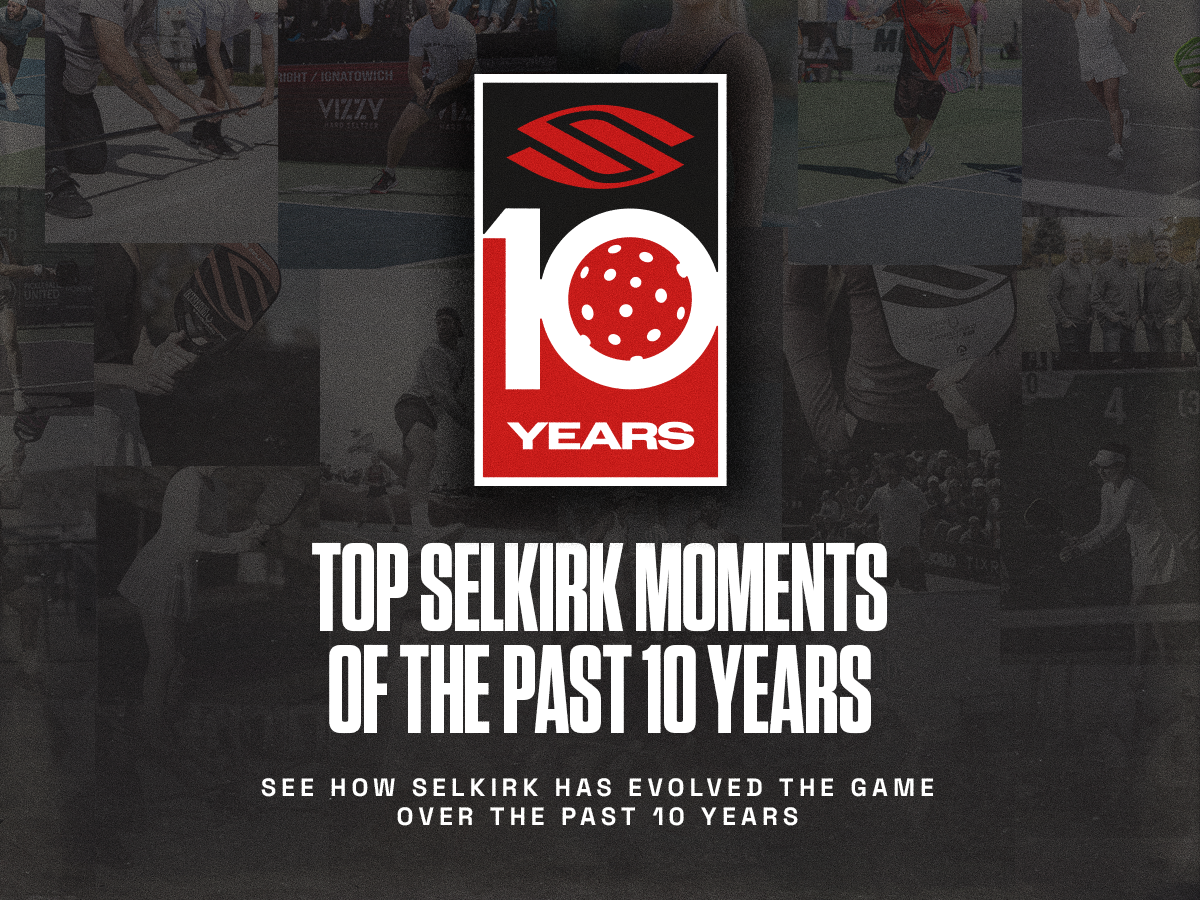
In a new 7-part series on Selkirk TV, Catherine Parenteau is breaking down the elements of a successful singles game. In Episode 6, Catherine teaches players how to hit winning returns that challenge their opponents.
Strategies for pickleball returns
As a general rule, you want to hit your return as deep to the baseline as possible. This will put you in a position to make a great following shot that allows you to move forward to the kitchen line.
The easiest way to get to the kitchen line quickly is to hit your return to the opposite side of the court from where your opponent is serving. Doing this makes your opponent run the full width of the court, causing them to scramble from the start of the point.
While it can be an effective strategy to hit this type of return often, make sure to switch up your returns every once in a while to keep your opponents on their toes.
If you notice they’ve picked up on your strategy and have started cheating to the opposite side of the court after their serve, it’s time to try a different return. Rather than hitting your return to the opposite side of the court, wait until your opponent starts cheating to the opposite side, and instead hit a return down the line behind them. If you’re successful, they will likely quit cheating to one side or the other after their serve.
It’s also important to position yourself in a spot to receive your preferred shot. For example, if you are right-handed and prefer to hit a forehand, cheat to the left side of the court so that you have more space to hit a forehand.
It’s inevitable that your opponent will hit a serve that you weren’t prepared for. When you’re scrambling to return a serve, remember: You can never go wrong with the middle.
Aim to hit the ball as deep as you can in the middle of the court. Then, reestablish your footwork to hit your next ball in a place that allows you to move to the kitchen line.
Drills to improve your return of serve
Now that you have a basic understanding of return strategies for singles, it’s time to work on the skills involved.
Return to the middle
Have your partner serve balls at you at varying speeds and locations on the court. No matter whether you’re hitting forehand or backhand — or are steady or off-balance — hit your return as deep to the baseline in the middle of the court as possible.
Move the server
Have your partner serve the ball to you and practice hitting a return that is on the opposite side of the court from where they served. This will get your opponent moving from the very first shot of the rally.
Once you feel comfortable hitting cross-court, practice hitting some shots at the exact spot your partner served from. This will help you switch up your shot selection when your opponent thinks they have your cross-court strategy figured out. As they cheat over after their serve, you can hit your return back behind them.
Split step
Now that you’ve practiced hitting returns to various spots on the court, it’s time to practice getting to the net. Have your drilling partner serve the ball and hit a return to any spot of the court you choose.
When your opponent (or in this case, your drilling partner) is scrambling, start moving toward the net. As soon as you see them start their motion to hit the ball, perform a split step and prepare to receive the shot.
A split step is a small jump with both feet that gets your hips square to the net. This gets your body centered to react to the shot coming toward you properly. After you split step, you’re better positioned to move laterally across the court.
You do not have to get to the net after your first return shot. Just like in doubles, you can gradually work your way to the net. You will likely stay back to hit a shot that is deep and low. Wait for a shot that is shorter and/or higher to start your approach to the net.
Keep up with previous episodes
Follow the 7-video installment to learn everything you need to know to dominate the singles game. Check out the previous episodes below:
- Episode 1: When to use your two-handed backhand
- Episode 2: Unlocking winning groundstrokes
- Episode 3: How to target your opponent’s weaknesses
- Episode 4: How to warm up for a singles match
- Episode 5: Best serving strategies
























































